3 words that pack a lot reflecting as they do the Paralympic Vision. [1] Succinct and apt.
As we’ve had ample discussion about the Olympics, its time we tackled the Paralympics considering the next edition will begin on September 6.
To be clear, the “Para” in Paralympics is not meant to refer to Paraplegic. “Para” means “beside” in Greek. So the Paralympics are meant to be alongside or parallel, i.e, equivalent to the Olympics. Paralympians are also elite athletes just like Olympians. In fact –
“Five of ten Powerlifting world records are held by Paralympians. One of them is Ahmed Gomaa Mohamed Ahmed from Egypt, whose world record of 193.5kg exceeds the non-disabled record by more than 10 kilograms. Athletes in 100m sprints have posted times within one second of the Olympic record. Adekunde Adesoji, a visually impaired athlete from Nigeria, for example, covers the 100m in sensational 10.76 seconds. Alpine skiers descended the slopes of Snow Basin at the Salt Lake 2002 Paralympic Winter Games with speeds of more than 100km per hour.”[2]
By the way, the Paralympics are not the same as the Special Olympics. The latter is only for the intellectually disabled while the Paralympics are for all disabled (although participation in the Paralympics by the International Sports Federation for Persons with Intellectual Disability a.k.a. INAS-FID has been suspended at present but that’s another matter which we will briefly discuss later below).
The 1st Paralympic Games were held in Rome in 1960 the same place and year as the XVII Olympiad. Although that seems to be just a coincidence as only beginning 1988 were the Paralympics and Olympics consistently held in the same year and city. Now, the selection of the Olympics host city includes evaluating the city’s ability to host the Paralympics.[3] Further proof of the parallel natures of both Games.
The Summer Games can only last 12-14 days while the Winter Games only between 9-12 days.[4]
The Paralympic Sports
A sport may be considered for inclusion in the Paralympic Programme if, among other things: a) the individual sport or discipline is “widely and regularly practiced” in at least 24 countries, or b) the team sport or discipline is “widely and regularly practiced” in at least 18 countries.[5]
There are 20 sports to be played in the Beijing Paralympics. 16 are also Olympics sports, namely, Archery, Athletics, Cycling, Equestrian, Football (5-a-side), Football (7-a-side), Judo, Rowing, Sailing, Shooting, Swimming, Table Tennis, Volleyball (Sitting), (Wheelchair) Basketball, (Wheelchair) Fencing, and (Wheelchair) Tennis, while the remaining 4 are exclusive to the Paralympics.[6]
The 4 distinctive Paralympic sports are:
1. Boccia – A sport which begins by throwing the white target ball or the “jack” into the playing area. The same player also rolls the first Boccia ball as close as possible to the jack. The athletes use their hands, feet or an assistive device where required, to propel the balls. Thereafter the opposing team throws until they get a ball closer to the jack or until they have thrown all of their team’s balls. Play then returns to the first team. The end continues in this manner until both teams have thrown all of their balls.”[7]
2. Goalball - This is exclusive to visually impaired athletes. The object is to roll the ball into the opponent’s goal while the opposing players try to block the ball with their body.
Bells inside the ball help to orient the players indicating the direction of the on-coming ball. Therefore, while play is in progress, complete silence is required in the venue to allow the players to concentrate and react instantly to the ball. Athletes wear ‘blackout’ masks on the playing court, which allows persons with varying degrees of vision to participate together.”[8]
3. Powerlifting – This is weight-lifting where the athlete’s entire body must be stretched out on a bench during lifting.[9]
4. Wheelchair Rugby – A sport which combines “elements of Basketball, Handball, and Ice Hockey.
The object of the game is to carry the ball across the opposing team’s goal line. Two wheels must cross the goal line for a goal to count, and the player must have firm control of the ball when he or she crosses the line.
The ball may be carried on the lap, but must be passed between players or bounced at least once every ten seconds.”[10]
And, yes, there are also Paralympic Winter Games. There are 4, namely:
1. Alpine Skiing – “Skiers with blindness/visual impairment are guided through the course by sighted guides using voice signals to indicate the course to follow. Athletes with physical disabilities use equipment that is adapted to their needs including single ski, sit-ski or orthopaedic aids.”[11]
2. Ice Sledge Hockey – ice hockey where, instead of “standing on skates, players sit on aluminum or steel sledges fitted with two blades. They grip two double-ended sticks, one in each hand. One end of the stick has a sharp pick that the players use to propel the sledge, the other has a curved blade to pass and shoot the puck.”[12]
3. Nordic Skiing[13] – composed of the ff 2 events:
1) Biathlon – consisting of “a 7.5km route divided into three 2.5km stages. Between the two stages athletes must hit two targets located at a distance of 10 metres. Each miss is penalized by an increase in the overall route time. Athletes with blindness/visual impairment are assisted by acoustic signals, which depending on signal intensity, indicate when the athlete is on target.”
2) Cross Country Skiing – “Depending on functional disability, a competitor uses a sit-ski, a chair equipped with a pair of skis. Athletes with blindness/visual impairment compete in the event with a sighted guide.”
4. Wheelchair Curling – This is played by pushing, from a stationary wheelchair, 40 pound granite donuts down a sheet of ice towards a 12 feet circular target that is 40 yards away to try to place them closer to the center than those thrown by the opponent.[14] “The sport is open to male and female athletes with a physical disability in the lower part of the body. This includes athletes with significant impairments in lower leg/gait function (eg, spinal injury, cerebral palsy, multiple sclerosis, double leg amputation, etc), who require a wheelchair for daily mobility.”[15]
Eligibility to Compete
As with the Olympics, the International Federations (IFs) have the authority to set the eligibility requirements for their respective sports. But the International Paralympic Committee (IPC) has laid down certain general standards in the IPC Classification Code And International Standards (November 2007), namely:
1. An “Athlete must have an impairment that leads to a permanent and verifiable Activity Limitation.” (Article 5.2) An Activity Limitation is defined as difficulties in executing activities. (Appendix 2: Glossary)
2. This “impairment should limit the Athlete’s ability to compete equitably in elite sport with Athletes without impairment.” (Article 5.3)
So, absolutely no able-bodied athletes are allowed. Remember we said earlier that the INAS- FID has been suspended from the Paralympics? Well, that resulted from the IPC’s finding that 10 of 12 players of Spain’s intellectually-disabled basketball team, which eventually won the gold medal in the Paralympic Games Sydney 2000, were not at all intellectually-disabled.[16] Seems that INAS-FID does not have an acceptable system for verifying athletes’ eligibility (so it was easy for the not intellectually-disabled to pass themselves as intellectually-disabled and proceed to compete in the Paralympics) so it and all intellectually disabled athletes are suspended until INAS- FID meets IPC’s eligibility standards.[17]
The spirit of fair play (including the Anti-Doping Code) are as much applicable in the Paralympics as they are in the Olympics.
Classification
In Paralympic sports, classification of athletes (and their sports) depend on the athletes’ function/impairment in playing their particular sports. Classification rules depend on the sports’ respective International Federations (IFs) but are, more or less, based on the traditional disability groups: amputee, cerebral palsy, visual impairment, spinal cord injuries, intellectual disability and the rest.[18]
A simple example will help better describe this. We’ll take archery since it has, thankfully, only 3 classifications (other sports have more than 10):[19]
1) Archery Standing (ARST): Archers in the Standing Class have no disabilities in the arms. The legs show some degree of loss of muscle strength, co-ordination and/or joint mobility. Archers in this class may choose to compete sitting in an ordinary chair with their feet on the ground or standing.
2) Archery Wheelchair 1 (ARW1): Archers in the ARW1 class have a disability in their arms and legs (tetraplegia). They have limited range of movement, strength and control of their arms and poor or non-existing control of the trunk. The legs are considered non-functional, due to amputation and/or similar limitations of movement, strength and control. They compete in a wheelchair.
3) Archery Wheelchair 2 (ARW2): Archers in the ARW2 class have paraplegia and limited mobility in the lower limbs. These athletes require a wheelchair for everyday use and compete in a wheelchair.
Excel, Inspire and Excite. Whatever the classification, whatever the category, the Paralympians - and all disabled athletes – in our eyes, do just that.
[1] International Paralympic Committee. (2003, April) IPC Handbook Paralympic Vision and Mission. Retrieved August 27, 2008, from The International Paralympic Committee Web site: http://www.paralympic.org/release/Main_Sections_Menu/IPC/IPC_Handbook/Section_1/Sec_i_chapter_1.1_Paralympic_Vision_and_Mission.pdf
[2] International Paralympic Committee. (2003). Spirit in Motion [Brochure]. Retrieved August 27, 2008, from The International Paralympic Committee Web site: http://www.paralympic.org/release/Main_Sections_Menu/IPC/IPC_Brochure.pdf
[3] International Paralympic Committee. (2007, July) IPC Handbook Paralympic Games Organization Principles. Retrieved August 27, 2008, from The International Paralympic Committee Web site: http://www.paralympic.org/release/Main_Sections_Menu/IPC/IPC_Handbook/Section_1/Sec_i_Chapter_3_Paralympic_Games_Principles.pdf
[4] Supra.
[5] Supra.
[6] (2008). Paralympic Sports. Retrieved August 27, 2008, from The Official Website of the Beijing 2008 Paralympic Games Web site: http://en.paralympic.beijing2008.cn/sports/index.shtml
[7] (2008). Competition Description. Retrieved August 27, 2008, from The Official Website of the Beijing 2008 Paralympic Games Web site: http://en.paralympic.beijing2008.cn/sports/boccia/n214343999.shtml
[8] (2008). Goalball. Retrieved August 27, 2008, from The International Paralympic Committee Web site: http://www.paralympic.org/release/Summer_Sports/Goalball/index.html
[9] (2008). Competition Description. Retrieved August 27, 2008, from The Official Website of the Beijing 2008 Paralympic Games Web site: http://en.paralympic.beijing2008.cn/news/sports/powerlifting/n214355287.shtml
[10] (2008). Competition Description. Retrieved August 27, 2008, from The Official Website of the Beijing 2008 Paralympic Games Web site: http://en.paralympic.beijing2008.cn/sports/wheelchairrugby/n214357490.shtml
[11] (2008). Alpine Skiing. Retrieved August 27, 2008, from The International Paralympic Committee Web site: http://www.paralympic.org/release/Winter_Sports/Alpine_Skiing/index.html
[12] (2008). Ice Sledge Hockey. Retrieved August 27, 2008, from The Vancouver Organizing Committee for the 2010 Olympic and Paralympic Winter Games Web site: http://www.vancouver2010.com/en/WinterGames/WinterGamesSports/SH
[13] (2008). Nordic Skiing. Retrieved August 27, 2008, from The International Paralympic Committee Web site: http://www.paralympic.org/release/Winter_Sports/Nordic_Skiing/index.html
[14] (2008). Wheelchair curling - how to play and how to get involved. Retrieved August 27, 2008, from The Wheelchair Curling’s Home on the Internet Web site: http://www.wheelchaircurling.com/curling.html
[15] (2008). Wheelchair Curling. Retrieved August 27, 2008, from The International Paralympic Committee Web site: http://www.paralympic.org/release/Winter_Sports/Wheelchair_Curling/index.html
[16] (2001). INAS-FID Suspension: Developments in the case. The Paralympian Online, No. 1, Retrieved August 27, 2008, from http://www.paralympic.org/paralympian/20011/2001104.htm
[17] International Paralympic Committee. (2007) Position Statement Regarding the Participation of Athletes with an Intellectual Disability at IPC Sanctioned Competitions. Retrieved August 27, 2008, from The International Paralympic Committee Web site: http://www.paralympic.org/release/Main_Sections_Menu/Classification/2006_12_19_INAS_Position_Statement.pdf
[18] (2008). Classification. Retrieved August 27, 2008, from The International Paralympic Committee Web site: http://www.paralympic.org/release/Main_Sections_Menu/Classification/
[19] (2008). Classification. Retrieved August 27, 2008, from The Official Website of the Beijing 2008 Paralympic Games Web site: http://en.paralympic.beijing2008.cn/sports/archery/n214343852.shtml
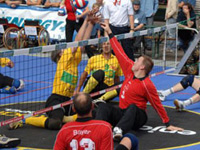
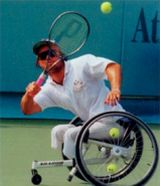
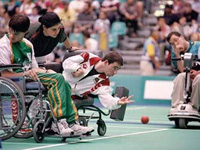
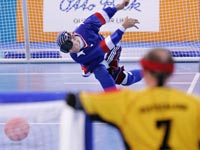
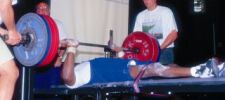
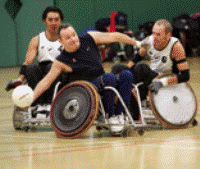
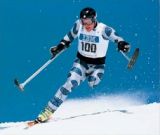
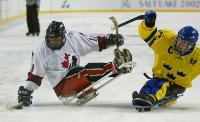
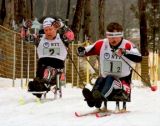
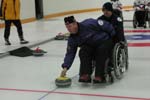


No comments:
Post a Comment